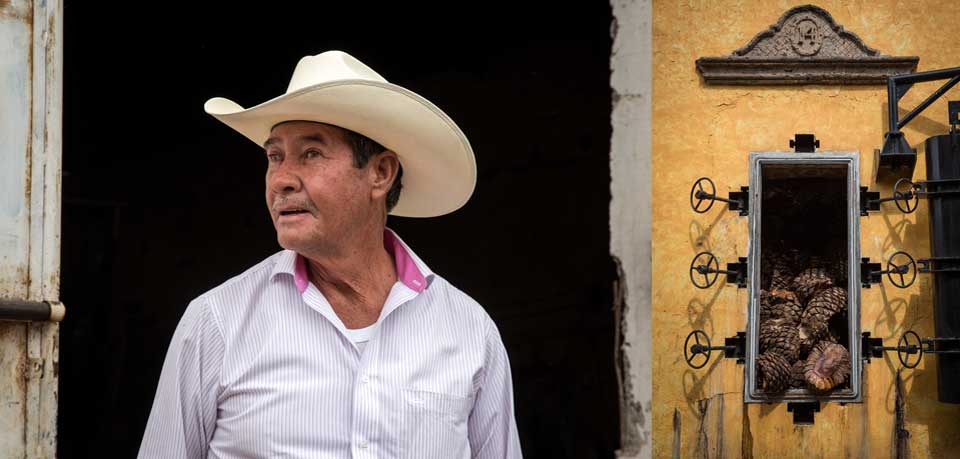Adolfo Murillo, now 58 years old, was born in Agua Negra, Jalisco, Mexico, where his grandfather was a small-plot farmer, but in 1961 his parents moved their family to Ojai, California, where his father, who later became a US citizen, oversaw a poultry operation.
Adolfo returned to his grandparents’ farm every few summers, until he went to UC-Santa Barbara to get a bachelor’s degree in biological sciences. He got his doctorate in optometry at UC-Berkeley, and on weekends, he and his wife would drive up to the Napa Valley and fantasize about owning a winery. But when his grandmother died, Murillo began to dream of blue agaves instead.
Locals thought he was nuts. Agua Negra is within the official zone for tequila production, but no one had ever tried cultivating agave in this high-desert region. Everyone told Murillo it was too cold, there was too little rain, and the soil wasn’t red enough—not enough iron to sustain agave. But Murillo turned to science: He had the soil tested and found that it had a very similar chemical composition to the highly productive fields of Arandas, to the southwest. And because it had been generations since the area around Agua Negra had been used to raise large-scale cash crops, the soil could be quickly restored to its organic state.
One evening, waiting outside the church for Mass to let out, Murillo stood in the fluorescent glare of a taco stand, talking to his friend Miguel Hurtado Gallegos. Hurtado grew up in Agua Negra but crossed into California in 1985, where he picked cabbage and spinach in the fields near Oxnard, not far from where Murillo’s parents moved after he graduated from high school. Over the years, as Hurtado divided his time between California and Jalisco, he watched the progress of Murillo’s organic project—but he wasn’t certain that the Murillo in Agua Negra had anything to do with the optometrist he knew in Oxnard.
Finally, in 2002, when his son had an eye appointment, Hurtado mentioned that he was from Agua Negra. Murillo eagerly offered to share his methods and even volunteered the services of Luis Guzmán (pictured above), his ranch manager, in helping Hurtado prepare a small plot of organic agave in Agua Negra. “We wanted our ranch to serve as a classroom,” Murillo said.
And not just for agave. Hurtado initially planted five acres of agave but soon turned the improved soil toward raising organic, non-GMO corn and bought cattle to raise on the feed. Murillo has now trained farmers who grow avocados, limes, strawberries, garlic, and chilies. He offered the instruction for free, and it came with only one condition: Farmers had to agree to share the methods they have learned with others. As the organic gospel spread, it had another, unexpected side benefit. Hurtado and fellow landowners soon expanded operations and began hiring more workers.
The village, once devastated by NAFTA and cheap American corn, now offers good-paying farm jobs, reversing the generation-long flow of young people to the United States.
In just eight years on the market, Murillo’s brand, Alquimia, has won 35 gold medals in international contests, including best in show for its extra añejo—the classification for tequila aged in an oak barrel for more than three years—at the San Francisco World Spirits Competition in March of 2015.

